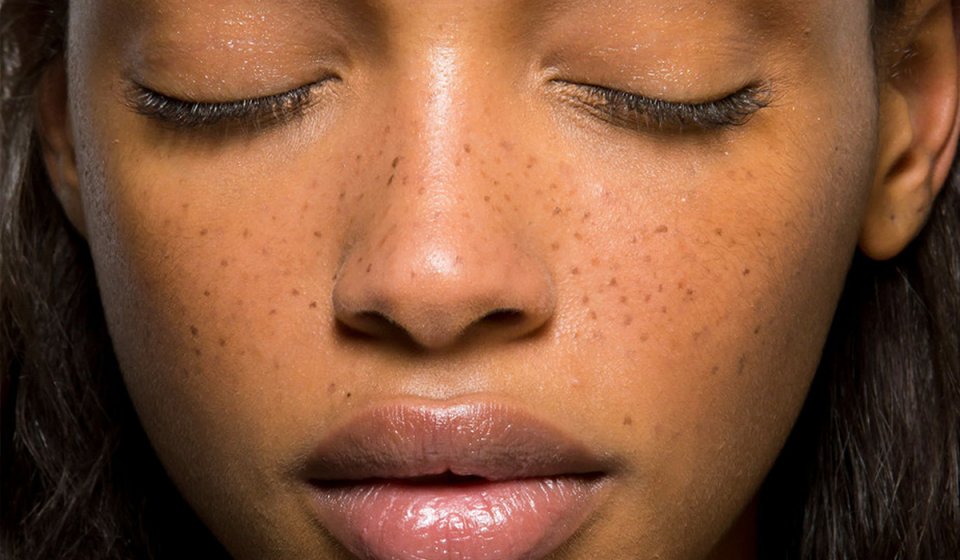Melasma is an unwanted souvenir after pregnancy or holidays in the tropics. It does not hurt, the itch has no health consequences, but it certainly does not add beauty. However, it is possible to fight brown spots on the face effectively, in which peels, lightening creams and laser therapy become the weapon. Here is the guide to treat and prevent melasma.
Melasma is a condition in which certain areas of the skin take a shade darker than the rest of the epidermis. It usually occurs on the face, especially the forehead, cheeks and above the upper lip – very often the discolouration appears on both sides of the face in an almost identical pattern. Darker spots on the skin can be of any shade – from light to dark brown. It happens, though relatively rare, that melasma appears in other parts of the body exposed to sunlight.
The discolouration is clearly darker than the surrounding skin, but they do not differ in terms of texture – they are usually smooth and, touching the face, we do not feel the border between the change and healthy skin. Moreover, melasma does not cause pain, burning or itching, and may fade during the winter and reappear in the summer months.
The mask of pregnancy, or what is chloasma?
Chloasma, or melasma as it is called today, is a type of discolouration resulting from the increased secretion of melanin by pigment cells. Unfortunately, there are many reasons for this overproduction, most of which are related to the hormonal balance, which makes melasma much more common in women than in men (only 10% of people with chloasma are men).
Especially lovers of summer sunbaths and pregnant women must take into account the possibility of stains on the skin – among the latter, such discolouration is so common that chloasma was once referred to as a “pregnancy mask”. As a consolation for future mothers, however, it is worth mentioning that dark spots usually disappear on their own within a few months after giving birth. The factors favouring the development of chloasma are primarily:
- genetic conditions – research has shown that in 60% of people affected by melasma, their relatives and ancestors suffered from the same problem;
- exposure to UV radiation ;
- thyroid disorders ;
- taking photosensitizing drugs that increase sensitivity to the sun (e.g. tetracycline antibiotics and retinoids );
- hormonal drugs, incl. hormone replacement therapy and hormonal contraception;
- pregnancy ;
- certain herbs, such as St. John’s wort and calendula;
- cosmetics containing photosensitizing substances.
Some non-hormonal medications also contribute to the development of chloasma, including:
- drugs for the treatment of ovarian tumours and adnexitis;
- antifungal agents;
- painkillers and anti-inflammatory drugs;
- antidiabetic and diuretic drugs.
People between the ages of 20 and 40 are particularly vulnerable to chloasma, as well as those with a darker complexion, i.e. phototypes III and IV, including people of Hispanic, African, Indian, Mediterranean, Middle Eastern and Asian origin. Melanocytes, or pigment cells, are much more active in their skin than in people with fair skin.
Melasma – prevention is better than cure
Discolouration can be removed or at least reduced, but it requires time and sometimes considerable financial outlays. Moreover, chloasma tends to recur, especially in summer. So it is better – both for the appearance of the skin and the balance of the bank account – to prevent its formation than to treat the effects of neglect.
Prevention of discolouration primarily involves the use of creams with a high degree of protection, i.e. with filters above SPF 50. People at risk should befriend them permanently and use them all year round, also on cloudy days.
What if the discolouration does appear? Melasma is sometimes treated as a cosmetic problem rather than a medical one, but you shouldn’t skip a medical consultation. The diagnosis is quite simple and most often does not even require the use of medical devices.
However, the doctor may use a dermatoscopy or the so-called Wood’s lamp to estimate the type and depth of discolouration. Some dermatologists also order a biopsy, but this is not a common activity. Based on the visual inspection, interview and test results, the doctor selects a treatment.

